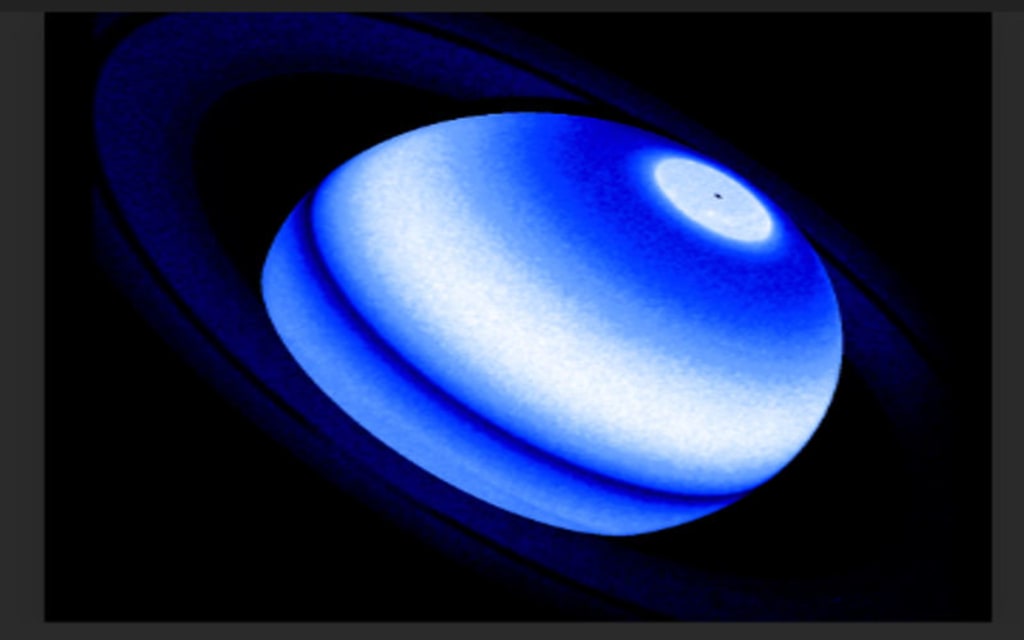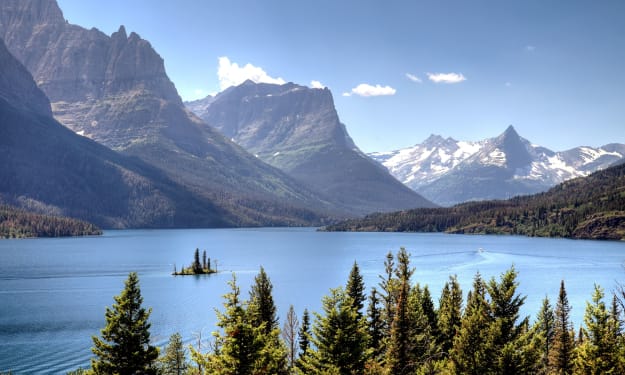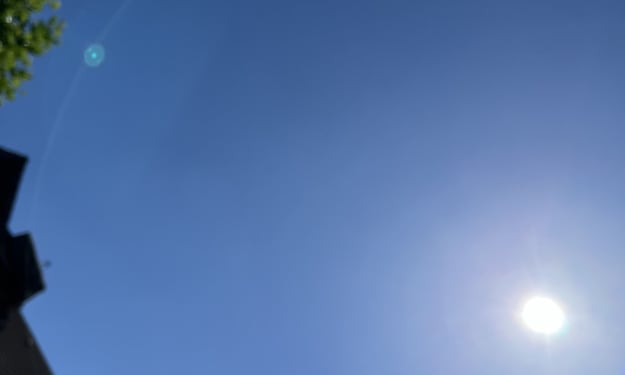Extraordinary phenomena occur uniquely on Saturn.
Saturn

Something very exciting is going on Saturn; it's called a spoken season, and the planet isn't turning into a giant gaseous wheel. Let me tell you more about this. phenomenon each year, NASA's Hubble Space The telescope devotes some of its time to observing Saturn, a gas giant like me and the second-largest planet in the solar system, and this space body always has something new to surprise us with For example, look at one of the latest images. of the gas giant, see those smudgy spokes They mean that Saturn's spoke season is starting like our planet Saturn is tilted on its axis; that's why it has four seasons, but since the orbit of the gas giant is much larger, each of these seasons lasts about seven Earth years. Keep this in mind; it's important now. The next thing we need to talk about to understand the concept of the unique spoke season on Saturn is the equinox on Earth, it's the moment when the sun is exactly above the equator of the planet. and day and night are of the same length. But on Saturn, it's something a bit A different equinox occurs when Saturn's rings are tilted from the edge onto the sun, and even though equinoxes on Saturn happen every spring and fall, just like on our planet, they occur very seldom, roughly once every 15 Earth years. That's why astronomers are so excited. About this event, now look, there are two Smudgy spokes in this ring; it's called Ring B and is on the left of the picture. resemble the spokes on a bicycle. The shading and shape of the spokes vary. may seem dark or light; it depends on the angle and illumination; sometimes they might look like blobs instead of something with a classical radial spoke shape; they also don't last long, but more and more will. start to appear the closer we were to May 6, 2025; that's when the actual equinox Saturn will occur, but what caused the spokes? Astronomers think it might be the gas giant's magnetic field when the planetary magnetic field interacts with the solar wind, it creates an electrically charged environment on Earth, which results in the Northern Lights. also called Aurora Borealis, and if we speak about Saturn, the tiniest icy ring particles might get charged too, and it probably temporarily levitates these particles above the larger boulders. Rings consist of, for the first time, the spokes in Pn's Rings, which were spotted by NASA's Voyager Mission. It happened in the early 1980s at the time. We didn't know that these spokes were a seasonal phenomenon. Voyager 2 just passed by the planet and then sped on to figure out what these spokes were and how they functioned. Astronomers needed a space telescope that could observe Saturn's rings from afar, like Hubble. The latest Equinox on Saturn occurred in 2009 At that time, NASA's Cassini space probe was traveling around the gas giant. sent many amazing images back to Earth. It quickly proved that the spokes weren't caused by gravitational interactions with Saturn or the influence of the gas giant moons or small moonlets, which make up the planet's rings. It was the year 2005 when Cassini confirmed that the speakers were related to Saturn's magnetic field. The mission was finished in 2017; now Hubble keeps its long-term monitoring of the changes on and around Saturn. Despite all the observations, astronomers still can't predict the beginning and duration of the speaking season.
Saturn's prominent rings are a perfect laboratory for studying this phenomenon because, even though other gas giants in the solar system also have rings, are not so visible, and scientists don't know whether spokes occur on those planets, but these spokes aren't the only exciting space phenomenon; our solar system is a fascinating place, and that's why if you were standing at the Martian Equator Barefoot, your feet wouldn't get how cold the temperature there would feel on a sunny spring day on Earth, but you'd have to wear a hat at that height. of your head, it would be cold.
Now that Venus spins backward compared to most other planets in the solar system and the sun itself, one of the explanations astronomers have come up with is a collision with some solid object. For example, an asteroid that happened in the past on Jupiter's moon has hundreds of volcanoes, which makes the moon is also the most volcanically active object in the solar system. It also has a weird yellowish surface. It looks blotted and resembles a pepperoni pizza. Europa, one of Jupiter's four biggest moons, is covered. In ice, this ice shell can be 10 to 15 miles thick, but it also has some smooth patches, so If you're into ice skating, you would like it there if you lumped together all the known asteroids in the solar system. Their total weight would still be smaller than 10% of the mass of our moon. Scientists believe that mercury might still have a partially molten core. could explain why Mercury has a magnetic field, even if it's just 1% as strong as Earth's. Mercury's core takes up around 42% of the planet's volume. Mercury also has wrinkles when its iron core cools the planet's crust and makes the surface of the planet. These wrinkles are called lobate. scarps. The biggest of these scarps can be hundreds of miles long and up to a mile high. Uranus is the only planet in the solar system to rotate on its side. The reason might be an ancient mega-powerful collision with an earth-sized object, but so far, it's just a theory. Mars might get a set of rings of its own. In the next 70 million years, its largest moon, called Phobos, will be orbiting closer. and closer to the planet one day, it's likely to get broken apart by the gravitational pull of the red planet and turn into a ring that can last for millions of years. I won't be around that, so I'll just take their word for it. Scientists think that the moon's surface has more craters than Earth's because it doesn't have so much natural activity going on with winds, rain, earthquakes, and Erosion keeps altering the surface of our planet, but the moon has almost no weather to change its appearance.
Saturn is the most platen planet in the solar system; it's squished at the poles, and any point on the equator is about 4,000. miles farther from the center of the planet than the poles in Hubble Space A telescope weighs almost as much as two male African elephants and is as long as a big school bus. Yeah, that's a launch. I'd love to see two elephants on a school bus. It's made almost 1.5 million. observations since it was launched in 1990, astronomers have used this data to write about 15,00 thousand scientific papers about everything on Earth and everything people can see in space The use of telescopes is normal. It's made up of atoms and molecules and adds up to less than 5% of the universe. Almost 68% of the universe is dark. energy and the remaining 27% is dark. Does that matter? Saturn has a mysterious vortex swirling over the planet's South Pole; the whole thing resembles an enormous hurricane-like storm measuring almost 5,000 meters across. That's 2/3 the diameter of Earth. What confuses astronomers is that although the phenomenon looks like a hurricane, it doesn't behave like one. Saturn is also the only planet in the solar system that's less dense than water; in other words, if you find a bathtub large enough, To fit this gas giant, it would float. There are like rubber duck earthquakes on the moon; they don't occur as often as on our planet, but when they do, they happen. closer to the center of the satellite. Scientists think moonquakes might be caused by the gravity of the Earth and the Sun, one of Saturn's moons, and Iapetus have bizarre two-tone coloring.
The difference between the moon's two hemispheres is that one is light, and the other is eerily dark. Scientists haven't figured out this mystery yet. Now the only asteroid belt in the solar system astronauts know about is between Mars and Jupiter. There are thousands of asteroids in this area; they're irregularly shaped solid objects of different sizes, but all of them are way smaller than a planet. Scientists have analysed the chemical content of some meteorites found in the Sahara Desert, Antarctica, and other places. Some of the rocks turned out to have a Martian origin; others arrive from the moon or the asteroid belt between Mars and Jupiter is space rocks, so we can also say space rocks.
About the Creator
Chat-Up
Get ready to dive into an intricate web of intrigue, emotion, and revelation that will keep you turning those pages.
Enjoyed the story? Support the Creator.
Subscribe for free to receive all their stories in your feed. You could also pledge your support or give them a one-off tip, letting them know you appreciate their work.






Comments
There are no comments for this story
Be the first to respond and start the conversation.